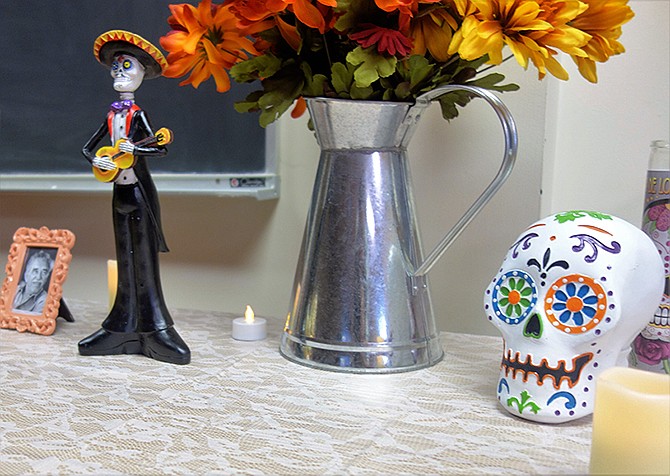Hannah Bolados, associate Spanish professor at William Woods University, said the Mexican holiday Day of the Dead has seeped its way into American culture.
"It's pretty prevalent in our pop culture, we see it everywhere," she said. "A lot of American cities are now embracing the holiday. The city I came from, Tucson, Arizona, has the largest Day of the Dead procession in the country."
To help students understand the meaning of the culture, Bolados presented some misconceptions surrounding the holiday.
"I thought it'd be easier to approach it by explaining what it's not," she added. "First and foremost, it's not Halloween. We can't compare the two, they're nothing alike."
Day of the Dead has its roots long before the Spaniards colonized Mexico, Bolados said.
"Mexicans have celebrated Day of the Dead since long ago in 1800 B.C.," she said. "Aztec cultures originally celebrated the goddess of the underworld. When they were conquered by the Spaniards, it began to be mixed with the Catholic All Saints Day. Today, the festival is a hybrid of sorts."
Opposed to the gory, spooky and death filled Halloween holiday, Day of the Dead serves as a reminder of those people who have died, Bolados added.
"We aren't talking about death itself but about the people who have died," she said. "It gives us time to reflect on who came before us and where we are going."
The festival is a two-day celebration Nov. 1-2. According to Bolados, the first day celebrates the children who have died, and the second day celebrates adults. The festival is full of dancing, eating the favorite food of departed loved ones and bright colors.
"This is not a sad holiday," she said. "It's actually a joyous celebration. It's a party to welcome the people back to earth and celebrate the presence of their souls. It's really about love, not fear."
The iconic Day of the Dead skulls have even been spotted in nationwide retail chains, Bolados said. The skulls traditionally have bright colors and often appear to be smiling.
"Laughing at death is what it's doing," she said. "The people celebrating understand death isn't a scary thing, it's a part of who we are."
Cassie Dunn, a senior at the college, said it was interesting to learn about how another culture views death.
"The most fascinating thing for more is the concept that death is a celebration," she said. "Our culture often stigmatizes death in a negative light."
Learning about other cultures is an important part of the American experience, Dunn said.
"It's important because to be part of a modern American society, we need to learn about other cultures," she added. "It's very ignorant and almost offensive to assume those celebrations are the way that U.S. pop culture sometimes portrays it."
Bolados said she focuses daily on helping students see life from a different point of view.
"I did this to bring awareness to what the tradition really means," she said. "We are trying to make our students more culturally aware."

